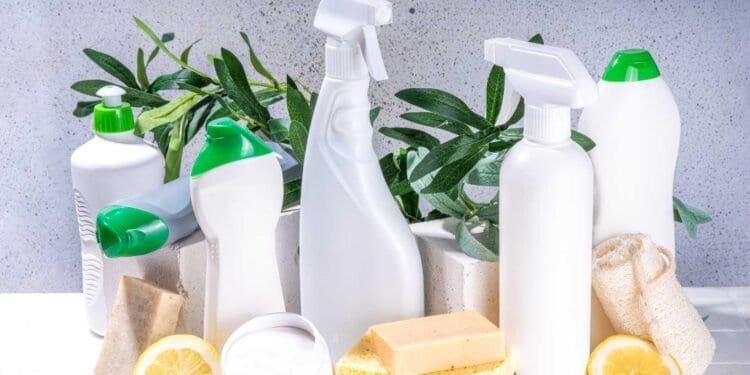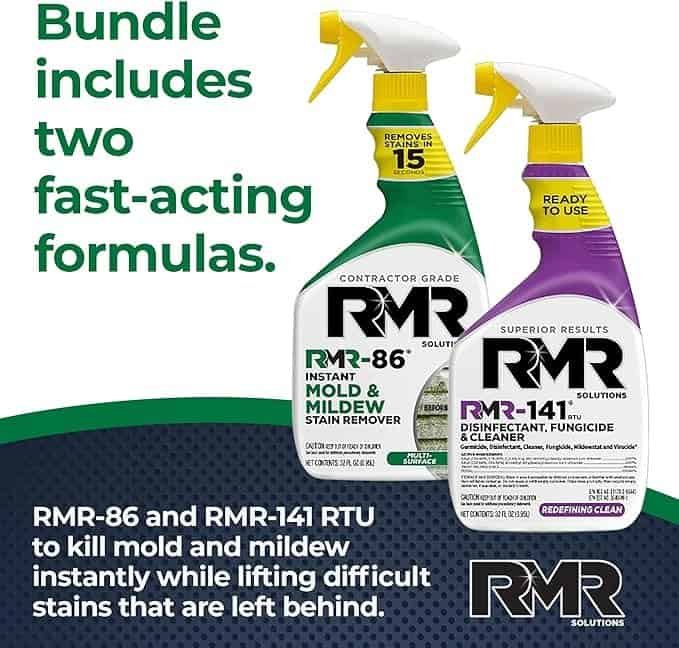Volatile organic compounds (VOCs) are chemicals that are commonly found in cleaning products, and they can have negative impacts on both human health and the environment. VOCs are released as gases from certain solids or liquids and can be harmful when inhaled. Some of the health effects associated with VOC exposure include headaches, dizziness, and respiratory irritation. Long-term exposure to VOCs can also increase the risk of cancer and other serious health problems.

Understanding VOCs in cleaning products is important for anyone who wants to make informed choices about the products they use in their home or workplace. It is also essential for individuals who are concerned about the impact of cleaning products on the environment. By learning more about VOCs and their sources, as well as how to identify and choose safer alternatives, consumers can take steps to protect their health and the environment.
Key Takeaways
- VOCs are chemicals found in many cleaning products that can have negative impacts on human health and the environment.
- Exposure to VOCs can cause a range of health problems, including headaches, dizziness, and respiratory irritation.
- Consumers can choose safer cleaning products by identifying and avoiding products that contain high levels of VOCs, and by looking for products that have been certified as safe and environmentally friendly.
What Are VOCs and Their Sources

Defining Volatile Organic Compounds
Volatile Organic Compounds (VOCs) are a group of chemicals that easily evaporate at room temperature and are found in many household and commercial products. According to Health.com, VOCs can cause a range of health problems, including eye, nose, and throat irritation, headaches, nausea, and damage to the liver, kidneys, and central nervous system. Some VOCs can even cause cancer.
Common VOCs in Cleaning Products
Cleaning products are a common source of VOCs in indoor environments. According to CMMOnline.com, some of the most common VOCs found in cleaning products include formaldehyde, benzene, and toluene. Formaldehyde is a carcinogen that can cause irritation of the eyes, nose, and throat, while benzene and toluene are both toxic and can cause headaches, dizziness, and nausea.
Sources of VOCs in Indoor Environments
Apart from cleaning products, there are many other sources of VOCs in indoor environments. According to SafeHouseholdCleaning.com, some of the most common sources of VOCs in indoor environments include paints, adhesives, air fresheners, and deodorants. Even furniture and building materials can release VOCs into the air.
It is important to note that not all VOCs are harmful. In fact, some VOCs are necessary for the proper functioning of the environment. However, exposure to high levels of VOCs can be harmful to human health. Therefore, it is important to choose cleaning products that are low in VOCs and to take steps to reduce exposure to VOCs in indoor environments.
Health Impacts of VOCs

Volatile Organic Compounds (VOCs) are chemicals that can have both short-term and long-term health effects. Exposure to VOCs can cause many short-term adverse effects, including eye, nose, and throat irritation, headaches, loss of coordination, nausea, and some respiratory issues for people who might be more sensitive. VOCs can also cause long-term health risks, such as kidney damage, lung cancer, and respiratory system damage.
Short-Term Exposure Effects
Short-term exposure to VOCs can cause a range of health effects, including irritation of the eyes, nose, and throat, headaches, and nausea. Some people may also experience dizziness or loss of coordination. These symptoms are usually temporary and will go away once the person is no longer exposed to the VOCs.
Long-Term Health Risks
Long-term exposure to VOCs can have serious health consequences. Some VOCs are known to cause cancer in humans, while others can cause damage to the kidneys, liver, or central nervous system. Long-term exposure to VOCs can also cause respiratory system damage, including lung cancer.
Vulnerable Populations
Certain populations, such as children, the elderly, and those with pre-existing respiratory conditions like asthma, may be more vulnerable to the health effects of VOCs. Children are particularly susceptible to the harmful effects of VOCs because their bodies are still developing, and they breathe in more air per pound of body weight than adults. Those with asthma may experience an exacerbation of their symptoms when exposed to VOCs.
To minimize exposure to VOCs, it is recommended to choose cleaning products that are labeled as low-VOC or VOC-free. It is also important to use cleaning products in a well-ventilated area and to avoid using them around vulnerable populations.
Regulations and Standards for VOCs

Governmental Regulations
The regulation of VOCs in cleaning products is primarily carried out by government agencies, such as the Environmental Protection Agency (EPA) in the United States. The EPA has established various regulations and standards to limit the amount of VOCs in cleaning products. For example, the EPA has established the Safer Choice program, which sets standards for cleaning products that are safer for both human health and the environment. The Safer Choice program requires that cleaning products meet strict criteria for VOC content, biodegradability, and toxicity.
In addition to the EPA, some states, such as California, have established their own regulations for VOCs in cleaning products. California’s Air Resources Board (CARB) has set limits on the amount of VOCs that can be present in various types of cleaning products, such as all-purpose cleaners, glass cleaners, and furniture polish.
Certifications and Eco-Labels
Various certifications and eco-labels are available to help consumers identify cleaning products that meet certain standards for VOC content. For example, the Green Seal certification program evaluates cleaning products based on their environmental impact and sets strict standards for VOC content. Products that meet Green Seal standards are considered to be safer for both human health and the environment.
Similarly, the Environmental Working Group (EWG) has established its own certification program for cleaning products, which evaluates products based on their safety and environmental impact. Products that meet EWG standards are considered to be safer and less harmful to human health and the environment.
When choosing cleaning products, it is important to look for certifications and eco-labels that indicate that the product meets certain standards for VOC content. This can help consumers make more informed choices and choose products that are safer for both human health and the environment.
VOCs and Air Quality

Cleaning products that contain VOCs can have a negative impact on air quality, both indoors and outdoors. VOCs are a type of air pollutant that can cause health problems, including headaches, dizziness, and respiratory issues. According to the American Lung Association, cleaning products that emit these toxic VOCs include air fresheners, bleach products, single-use disinfectant wipes, detergents, dishwashing products, furniture, floor polish, and oven cleaners.
Indoor Air Quality Concerns
Indoor air quality is a major concern when it comes to cleaning products. In fact, some studies have shown that indoor air can be up to five times more polluted than outdoor air. This is because indoor air is often trapped and recirculated, which can lead to a buildup of pollutants like VOCs. This can be especially problematic for people with respiratory issues like asthma.
Improving Ventilation and Air Filtration
To improve indoor air quality, it is important to improve ventilation and air filtration. This can be done by opening windows and doors, using exhaust fans in bathrooms and kitchens, and investing in air purifiers. It is also important to choose cleaning products that are low in VOCs, or that have been certified by third-party organizations like “A Safer Choice,” “UL ECOLOGO,” or “Green Seal.” These certifications ensure that the products have been independently tested and verified to be safer for both people and the environment.
In summary, VOCs in cleaning products can have a negative impact on air quality, especially indoors. To improve air quality, it is important to improve ventilation and air filtration, as well as choose cleaning products that are low in VOCs or have been certified by third-party organizations. By taking these steps, it is possible to create a safer and healthier indoor environment for everyone.
Identifying and Choosing Safer Cleaning Products

When it comes to choosing cleaning products that are safer for both human health and the environment, it can be overwhelming to navigate the many options available. However, by understanding what to look for on product labels and what claims to be wary of, consumers can make informed decisions.
Reading Labels and Understanding Claims
One of the most important steps in identifying safer cleaning products is to read labels carefully. Look for products that are labeled as “fragrance-free” or “low-VOC” (volatile organic compounds). VOCs are chemicals that can have negative health effects, and they are commonly found in cleaning products that contain fragrances.
Additionally, look for products that have been certified by third-party organizations as being eco-friendly or green. These certifications indicate that the product has been tested and found to meet certain environmental and health standards.
However, it’s important to be wary of claims such as “natural” or “organic,” as these terms are not regulated and can be misleading. Instead, look for specific certifications such as the EPA’s Safer Choice label or Green Seal certification.
Fragrance-Free and Low-VOC Products
Fragrances can be a major source of VOCs in cleaning products, so choosing fragrance-free products is a good way to reduce exposure to these harmful chemicals. Additionally, low-VOC products are a good option for those who prefer scented cleaning products.
Some common ingredients to avoid in cleaning products include phthalates, which are often used to make fragrances last longer, and 2-butoxyethanol, which is commonly found in window cleaners and can cause respiratory problems.
Overall, choosing safer cleaning products can help protect both human health and the environment. By reading labels carefully and understanding what claims to look for, consumers can make informed decisions and reduce their exposure to harmful chemicals.
The Role of Green Cleaning in Environmental Health

Green cleaning products have become increasingly popular in recent years, as more and more people become aware of the potential dangers of traditional cleaning products. These products are often marketed as being safer for both human health and the environment. But what exactly are green cleaning products, and how do they differ from traditional cleaning products?
Benefits of Green Cleaning Products
Green cleaning products are those that are made using natural, non-toxic ingredients. They are designed to be safer for human health and the environment than traditional cleaning products, which can contain harmful chemicals such as volatile organic compounds (VOCs). Using green cleaning products can help to reduce the risk of exposure to these harmful chemicals, both for individuals and for the environment.
Green cleaning products can also be more effective than traditional cleaning products. Many of these products contain natural ingredients such as vinegar, baking soda, and lemon juice, which are highly effective at removing dirt and grime. They can also help to reduce the amount of waste produced by cleaning, as many green cleaning products come in refillable or recyclable containers.
Sustainability and Impact on the Environment
One of the main benefits of using green cleaning products is their impact on the environment. Traditional cleaning products can have a negative impact on the environment, both during their production and after they are used. Many of these products contain chemicals that can harm soil and water, as well as contributing to air pollution.
Green cleaning products, on the other hand, are made using natural, sustainably sourced ingredients. They are designed to be biodegradable, meaning that they break down naturally over time and do not contribute to pollution. Using green cleaning products can help to reduce the overall impact of cleaning on the environment, making it a more sustainable practice overall.
In summary, green cleaning products are a safer, more sustainable alternative to traditional cleaning products. They are designed to be effective at cleaning while minimizing the impact on human health and the environment. By choosing green cleaning products, individuals can help to reduce their exposure to harmful chemicals and contribute to a more sustainable future.
Consumer Actions and Best Practices

Adopting Safer Cleaning Habits
Consumers can take several steps to reduce their exposure to VOCs in cleaning products. Firstly, they can switch to safer and more eco-friendly cleaning products that have lower levels of VOCs. They can also opt for fragrance-free products, as fragrances can contain VOCs that can cause respiratory irritation and other health issues.
Another way to reduce exposure to VOCs is to use cleaning products in well-ventilated areas. Consumers should open windows and doors to increase air circulation and avoid using cleaning products in confined spaces. They should also wear gloves and protective clothing when using cleaning products to prevent skin irritation and other health issues.
Consumers should also make sure to read the labels of cleaning products carefully. They should look for products that have been certified by reputable organizations like Green Seal or EcoLogo, which indicate that the products have met certain environmental and health standards.
Advocacy for Healthier Consumer Products
Consumers can also advocate for healthier cleaning products by contacting manufacturers and retailers and urging them to reduce the levels of VOCs in their products. They can also support organizations that work to promote safer and more eco-friendly cleaning products, such as the Environmental Working Group or Women’s Voices for the Earth.
In addition, consumers can support legislation that regulates the use of VOCs in cleaning products and other consumer products. They can contact their elected representatives and urge them to support legislation that protects human health and the environment from the harmful effects of VOCs.
By adopting safer cleaning habits and advocating for healthier consumer products, consumers can help protect their own health and the health of the environment.
Frequently Asked Questions
What are volatile organic compounds (VOCs) in cleaning products?
Volatile organic compounds (VOCs) are chemicals that are emitted as gases from certain solids or liquids. These chemicals can be found in a variety of household cleaning products, including air fresheners, bleach products, disinfectant wipes, detergents, and furniture polish. VOCs are released into the air when these products are used and can contribute to indoor air pollution.
How can I identify the VOC content in cleaning products?
Unfortunately, there is no easy way to identify the VOC content in cleaning products. Manufacturers are not required to list the VOC content on the label, so it can be difficult to know which products contain high levels of VOCs. However, some products may be labeled as “low VOC” or “VOC-free,” which can be a good indicator that they contain fewer harmful chemicals.
What are the health impacts of exposure to VOCs in household cleaners?
Exposure to high levels of VOCs in household cleaners can cause a range of health problems, including eye, nose, and throat irritation, headaches, dizziness, and nausea. Long-term exposure to VOCs can also lead to more serious health problems, such as liver and kidney damage, as well as an increased risk of cancer.
Are there effective alternatives to high VOC cleaning products?
Yes, there are many effective alternatives to high VOC cleaning products. For example, vinegar and baking soda can be used to clean many surfaces around the home. Other natural cleaning products, such as castile soap, lemon juice, and essential oils, can also be effective at cleaning and disinfecting surfaces.
What measures can be taken to minimize risks when using products with VOCs?
To minimize the risks associated with using products that contain VOCs, it is important to use them in a well-ventilated area. This can help to reduce the amount of VOCs that are released into the air. It is also important to follow the manufacturer’s instructions carefully and to avoid mixing different cleaning products together, as this can create harmful chemical reactions.
How do VOC levels in cleaning products compare to those in paints and coatings?
VOC levels in cleaning products are generally lower than those in paints and coatings. However, this does not mean that they are completely safe. It is still important to use cleaning products with caution and to choose products that contain fewer harmful chemicals whenever possible.














